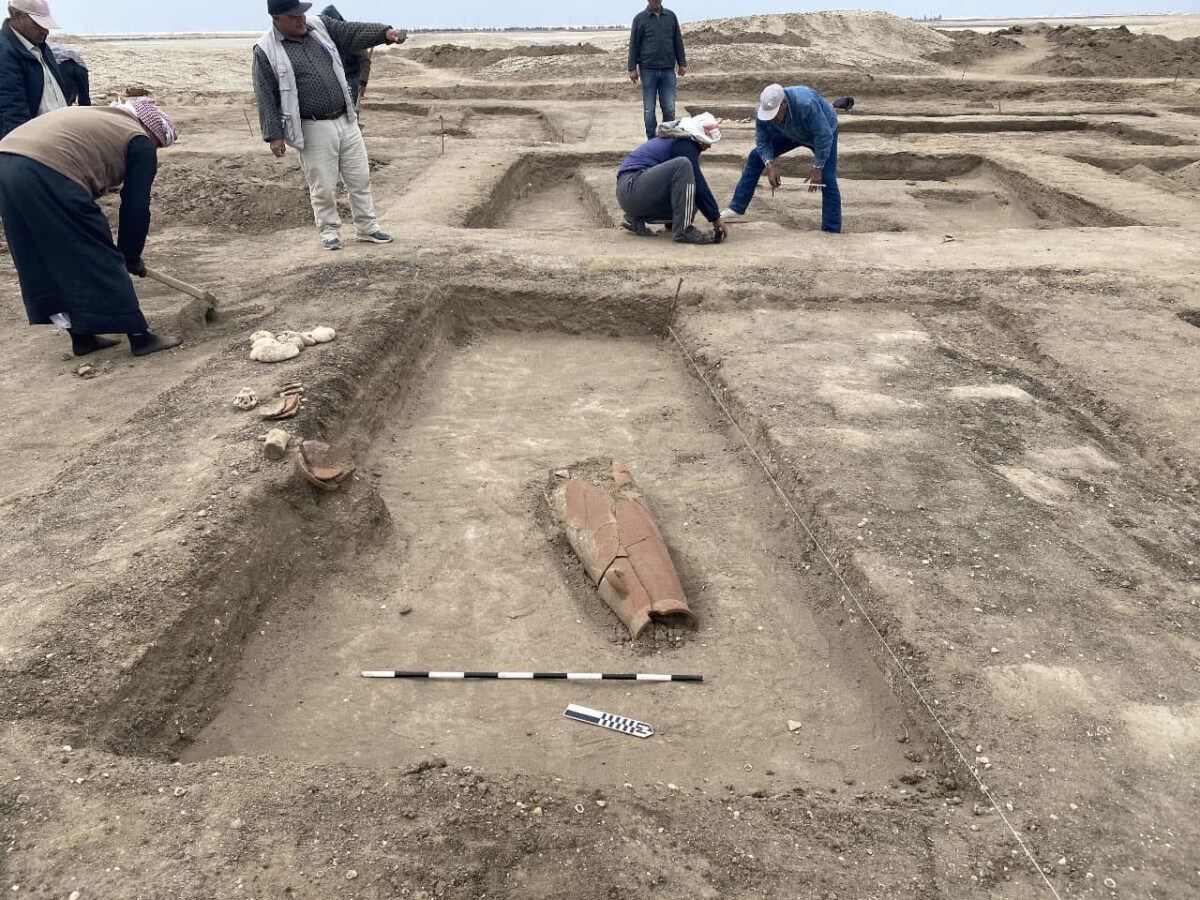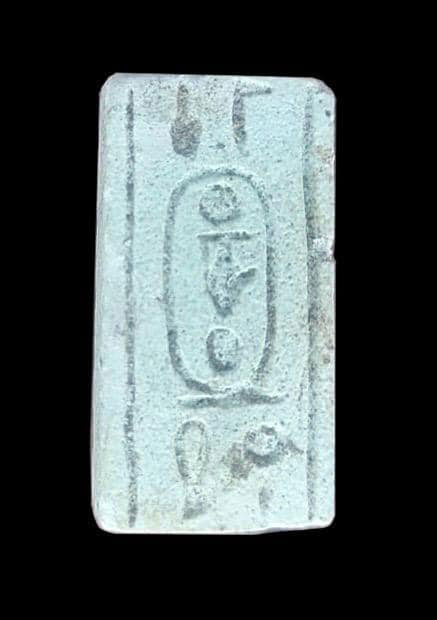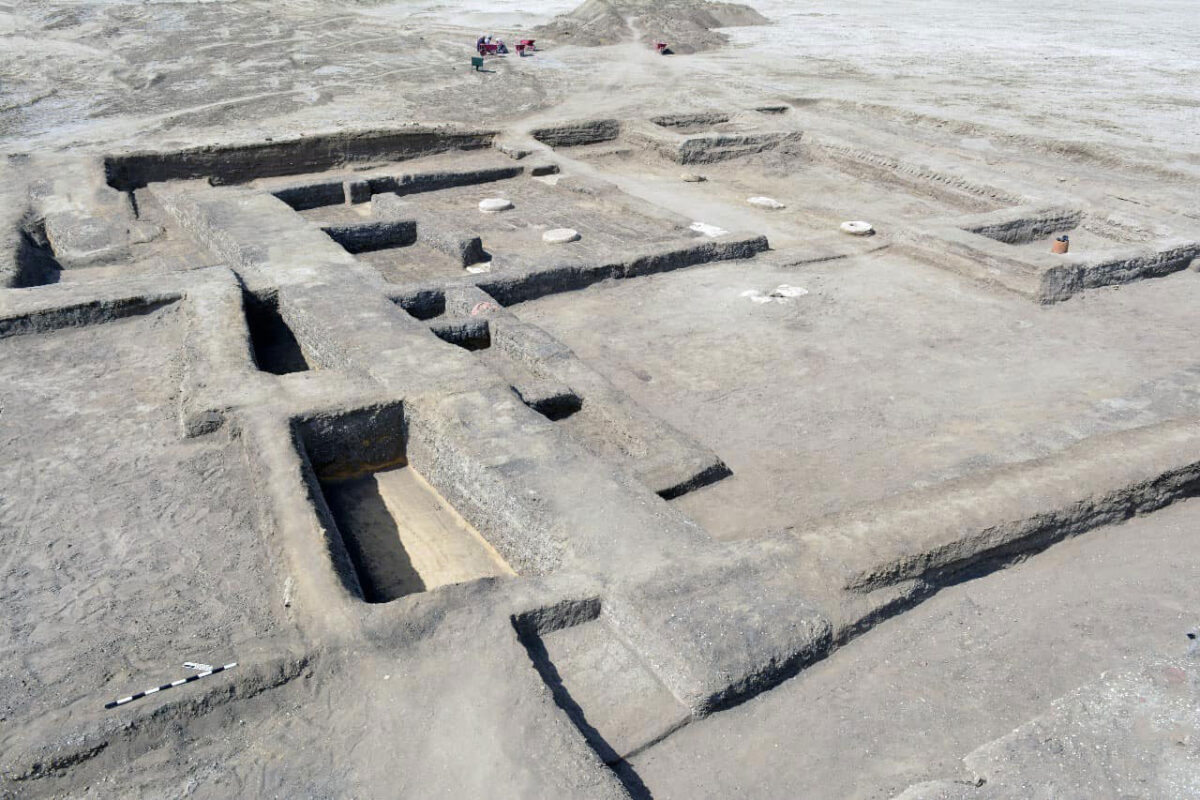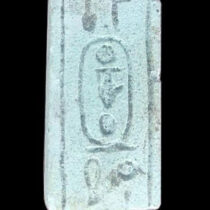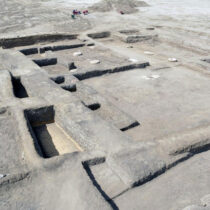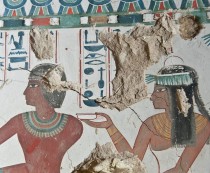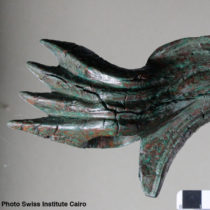The Egyptian archaeological mission working at the Tell Habwa archaeological site in the North Sinai Antiquities Area in the framework of the Sinai Development Project, has revealed the remains of a mud-brick building. According to Dr. Muhammad Ismail Khaled, Secretary-General of the Supreme Council of Antiquities, the architectural remains represent one of the royal “rest houses” or “palaces” located within the eastern gate of Egypt, on the basis of the building’s architectural layout and the scarcity of pottery fragments inside it. Dr. Khaled, pointed out that the preliminary scientific studies conducted on the finds discovered inside the building date the building to the New Kingdom, during the reign of King Thutmose III of the 18th Dynasty, and stressed the importance of this discovery, as revealing important information about Egypt’s military history during the era of the New Kingdom, especially in Sinai.
For his part, Dr. Hisham Hussein, Director General of Sinai Antiquities and Supervisor of the Archaeological Mission, said that the building consisted of two successive rectangular halls, with several rooms attached to them. The main gate of the building is located on the north side in the middle and leads to a first rectangular hall with three limestone column bases in the middle. The first hall is connected to another smaller rectangular hall that has two entrances, the first on the east side and the second on the west side, which are less wide than the main entrance to the building. In the middle of the hall are two limestone column bases, each of which is a meter in diameter. The stone lintels of the main entrances to this hall were also revealed. The second hall leads to two separate rooms, the first located towards the east and the second towards the west, and they are connected to the second hall through two entrances. He added that the mission also uncovered the stone lintels for the entrances to the rooms, in addition to a group of small rooms attached to the building from the outside, towards the east.
Professor Ramadan Helmy, Director of the North Sinai Antiquities Area and head of the mission, stated that the building was dated based on the sequence of layers and pottery discovered outside the building, in addition to finding a scarab bearing the name of Thutmose III. The rest house was likely used during the period of Thutmose III’s military campaigns to expand the Egyptian Empire towards the east. At a later stage, the building was fortified with a surrounding wall whose gate was located towards the east.
It is worth noting that during the Third Intermediate Period, starting from the 21st Dynasty until the 25th Dynasty, a cemetery is recorded in teh part of the site designated as Habwa II. In different stratigraphic sequences, a group of locally made amphorae of different shapes, containing child burials has been uncovered.
The site of Tell El Habwa (also known as Tell El Hebua and Tell El Habuwa) is identified with a place mentioned in written sources as Tjaru, which was important as one of the gateways to Egypt’s mainland as approached via Palestine. Tjaru is reported as a stronghold of the Hyksos, the Canaan-hailing rulers of Egypt during the final Second Intermediate Period, and a strategic spot along Egyptian military and trade routes throughout the New Kingdom and later on. The archaeological record testifies to the area’s importance, through extensive architectural remains of different functions, in a fortified site that was occupied from the Second Intermediate Period (administrative buildings, silos) up to the Saite Period (temples and an associated palace), as documented in the two areas known as Habwa I, II and III. Among the portable finds, two stelae record royal names of the Hyksos period, while foundation deposits belonging to a building ascribed to Habwa I included a small model of a faience plaque bearing the name of the 26th Dynasty King Ahmose II, (known as Amasis). Burials previously dated to the Twenty-Sixth Dynasty have recently been re-dated to the Third Intermediate Period.
